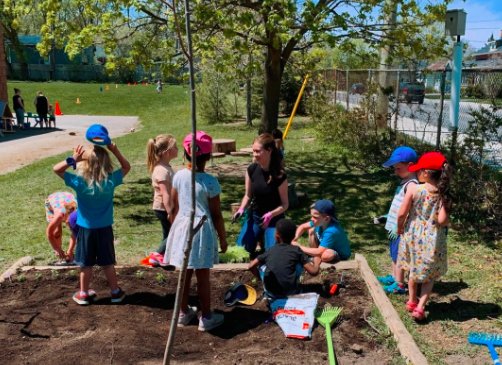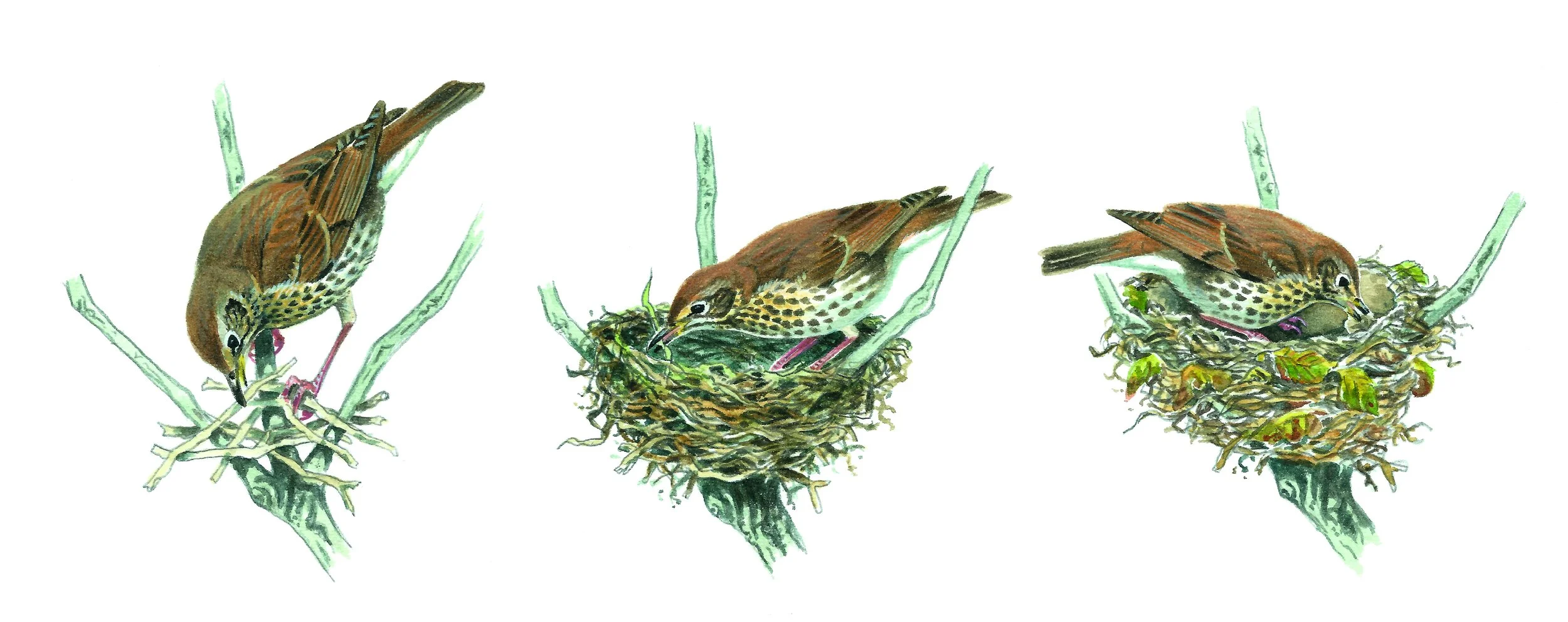Nurturing Togetherness: The Community Nest in Early Childhood
When I was getting ready for elementary school, my mom would sing to my siblings and I “a robin feathering his nest, has very little time to rest, gathering his bits of twine and twig” from the song Spoonful of Sugar from Mary Poppins. It feels very full circle, and intentional to be creating a metaphor between building meaningful relationships in childhood through ecological systems and a bird feathering their nest.
Nurturing Early Years Communities
A warm and inviting community has been widely recognized as an essential element in Early Years Education; however, when terms become commonly accepted and understood, they can sometimes be taken for granted (Wisneski & Goldstein, 2007). My e-portfolio aims to remind and reflect upon the ways in which community can be established during the early years and the profound effects of creating a sense of belonging for children. Different environments host different types of communities; a child’s classroom community, the community between educators and families, the place where collborative experiences take place, and the community beyond classroom walls all effect children in a variety of ways. Communities that are interwoven and intertwined, creating a strong nest-like structure that supports and nurtures each individual within it.
A child’s sense of belonging can originate from close relationships and expand through broader experiences and opportunities to engage with others beyond their immediate circle (Johansson & Puroila, 2021) In this portfolio, I will explore the methods of building meaningful connections and how a child's development is influenced by interacting systems and various communities, each impacting them in unique ways. Interacting and creating a meaningful, warm community environment extends beyond simply being nice, it should be intentional. Quality childhood programs should seek to incorporate all these elements and abilities so that each member (children, parents, caregivers) of early years communities has an opportunity to develop (Comer & Ben-Avie, 2010).
Gathering and Building in Layers
Community can also be understood through the lens of Bronfenbrenner’s (2005) ecological systems model, which provides insight into the intricate systems influencing human development. This model highlights the significance of environmental factors and social influences in shaping development. These systems interact together, creating a solid foundation, much like the construction of a nest. In the ecological systems model, the first system is the microsystem, focusing on the child and their immediate environments such as families, schools, friends, and communities. The second system, known as the mesosystem, involves the interactions between elements within the microsystem, such as family-school partnerships. The exosystem represents factors like parents’ health, family income, and school quality that directly or indirectly impact a child’s learning and development.Further out, the macrosystem encompasses societal conditions such as politics, economics, ideology, and culture, influencing the broader environment in which the child grows. (Stanley, K., & Kuo, N. C., 2022).
Drawing parallels to nest-building, the mesosystem can be linked to the twigs and sticks forming the base, the exosystem to the mud and smaller objects adding layers, and the branch representing the chronosystem on which the nest sits. These elements work together intentionally, mirroring how teachers, parents, schools, and community partners can collaborate within the mesosystem to provide a stable and supportive environment for a child's growth and development. By intertwining ecological systems theory with the metaphor of nest-building, we are able to highlight the vital role of community in early childhood development. Just as the materials of a nest come together to create a stable structure, the collaborative efforts of various systems in a child's life contribute to their overall stability and well-being.
Symbolism of the Nest: Building a Strong Foundation
Creating opportunities for children to develop and grow confidently can come from meaningful relationships and experiences during their early years. Lev Vygotsky (1978) idea that learning does not solely occur in the mind of the individual child but rather through play and shared interactions highlighting how knowledge is developed through shared interactions with others (Wisneski & Goldstein, 2004). Children are at the heart of a greater system of their peers, parents, teachers, schools, local communities and the global community. Ultimately, children rely on the support, influence, and protection of the individuals surrounding them similar to how a nest protects and nurtures a baby bird.
A nest is created of bits and pieces gathered by the bird, each piece alone does not represent a strong foundation but when woven together they become supportive. The child is nestled in the center of a nest, surrounded by different elements of microsystems; family, school, friends, and community members. These microsystems symbolize the twigs and branches forming a protective barrier around the inner core of the nest, offering immediate and direct support to the child's development. These close individuals create structure and stability through daily routines, relationships, and shared experiences. The intricate weaving of each different microsystem to create a mesosystem creates a strong outer layer of the nest that will influence the child through interactions between different systems. The branch that the nest sits on can be imagined as the exosystem representing the global community and acknowledging the political, global, technological, and cultural influences .
Weaving of Theory
Throughout this program, I have interacted and engaged with many theorist’s who describe and highlight community and togetherness in the early years. They can be related to each other in unique ways. Community can also be understood through the lens of Bronfenbrenner’s (2005) ecological systems model, which provides insight into the intricate systems influencing human development. Bronfenbrenner's theory outlines different layers of the environment that influence an individual. Vygotsky's (1978) theory focuses on the role of culture and social interactions in cognitive development. Moss's emphasis on holistic development aligns with Bronfenbrenner's and Vygotsky's view of the child as developing within a system of relationships and environments. Moss (2018) highlights the role of relationships and interactions in early childhood settings. This resonates with Bronfenbrenner's emphasis on the microsystem, where immediate relationships with family, caregivers, and peers greatly influence a child's development.
These relationships can be seen as the building blocks of the nest, forming its structure and stability. This leads into the idea of exploring who is in charge of building the nest; the parent, the educator, the child?
Children as Co-Constructors
While contemplating the metaphor of the child being protected within a nest-like structure built by their mother, I found myself re-imagining the child as the bird itself, actively building its own nest for protection. In this view, the child actively chooses how to interact with teachers and friends, while adults can influence, create spaces, and serve as models for these experiences (Mashford, Church, & Church, 2011). By empowering children to build their own metaphorical nests, they develop a sense of agency and ownership over their learning journey.
Just as a bird selects twigs and branches to construct its nest, children gather experiences, friendships, and knowledge to build their own sense of community. This metaphorical nest of community, constructed by the child themselves, becomes a foundation that will continue to support and nurture them throughout their lives. Through this lens, we are able to recognize the importance of fostering children's agency and allowing children to actively shape their own learning environments and communities.





